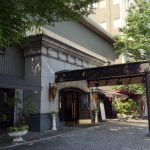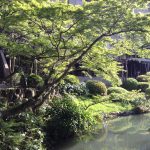Register, VISA, Hotel & Banquet & Tour
Registration
Please create *two* accounts; one for registration, and the other for abstract submission. The same ID is accepted.
See the resigtration and cancellation policy pdf files (LTD17)
Note that End of abstract submission: 25 April, 2017 (updated on 2017/04/13)
(if you have any problem on the registration page, please mail to ltd17(at)kys.jtb.jp )
[Registration fee] Early registration: 60000 yen for usual participants, and 40000 yen for students. After deadline: 70000 yen for usual participants, and 46000 yen for students.
[Important dates]
End of abstract submission: 25 April, 2017
(A post-deadline poster submission: mid-May, 2017)
Notification of acceptance: 21 May, 2017
End of early registration: 22 May, 2017
End of student-support application: 25 May, 2017
Announcement of final program: 18 June, 2017
Workshop dates: 17 – 21 July, 2017
(We will have a welcome reception in the evening of 16 July)
Bunquet
The workshop banquet will be held on July 20 at Suikoyen Garden Hotel (http://www.suikoyen.co.jp/),
which was established in the late 19th century on the site of falconer mansion of Kurume domain governed by the Arima family in the Edo period.


VISA
If you need VISA, please fill the Excel file and send it to the following address.
mailto:LTD-17(at)nao.ac.jp
General information on VISA is found in the web site.
Please send the query on the VISA at least *one month* before the conference.
Excursion
Excursion is scheduled in Wednesday afternoon, July 19th. The tours listed below are available. More information will be announced soon.
[EX-1] Dazaifu Tenmangu Shrine and Kyushu National Museum Tour
♪ Dazaifu Tenmangu Shrine 大宰府天満宮 Dedicated to 9th century scholar Sugawara-no-Michizane, the Dazaifu Tenmangu Shrine is a most popular for students to pray for success in school entrance examinations. Exiled from the Imperial Court in Kyoto on trumped up charges, Michizane persevered at Dazaifu under harsh conditions, with his character so admired that there are now 12,000 shrines to him across Japan. Dazaifu Tenmangu was established early in the 10th century. The shrine is well known for it 6,000 plus plum trees that blossom in the early spring. One of these trees, located to the right of the main shrine hall, is called ‘’Tobiume” – or ‘’Flying Plum’’ – as the tree is said to have so loved Michizane that it followed him in exile by flying down from Kyoto to Dazaifu. This shrine is located near Fukuoka City. Official website: http://www.dazaifutenmangu.or.jp/en
♪ Kyushu National Museum 九州国立博物館 As the fourth national museum next to Tokyo, Nara and Kyoto, Kyushu National Museum was founded on October, 2005. The concept of this Museum is “Gaining a fuller understanding of the formation of Japanese culture against the backdrop of Asian history”. Exhibitions, cultural properties conservation and research are planned in line with this concept. From the viewpoint of the season and the protection of the work, they exchange 30 to 50 cultural properties each month and constantly display 800 to 900 collections. Official website: http://www.kyuhaku.com/
[EX-2] Beppu’s Boiling Hells Tour
♪ Beppu’s Boiling Hells 別府地獄 The most celebrated of Beppu’s hot springs are its Jigoku, or Boiling Hells, pools of mineral-colored water and bubbling mud. A circuit of the nine hells, seven of which are located in the old geisha district of Kannawa, discloses their different functions, colors, and mineral properties. The Umi (Sea) Jigoku has waters the color of tropical ocean, while the color of the Chinoike (Blood Pond) Jigoku derives from dissolved particles of red clay. Oni-yama (Devil Mountain) Jigoku is an unlikely breeding ground for crocodiles. Shiraike (White Pond) Jigoku promises relief from diseases of the digestive organs. Tatsumaki (Tornado) Jigoku is a geyser that spurts every 20 minutes and has a temperature of 100 degrees centigrade. Souvenir shops and snack vendors have staked out spots near all the pools. Official website: http://www.beppu-jigoku.com/
[EX-3] Japanese Sake Breweries and Kitano Tenmangu Shrine Tour
♪ Yama-no-Kotobuki Brewery 山の壽酒造 This sake brewery is in Kurume area where we can get rich water and sake rice, the ingredients of sake. This brewery starts in Edo period (1818) and it lasts for 7 generations. Despite the complete destruction caused by typhoon damage in 1990, this brewery restarts making Japanese sake in1992
♪ Kitano Tenmangu Shrine 北野天満宮 Kitano Tenmangu Shrine was constructed in the middle of the Heian Period (1054). This shrine worships Sugawara-no-Michizane who is revered as the god of learning and transportation in Shinto religion. There is also the 900 years old giant camphor that has been registered as one of the Natural Monument list by the prefecture.
♪ Chikushi-no-Homare Brewery 筑紫の誉酒造 From the founding in 1897, Chikushi-no-Homare Brewery makes Japanese sake with traditional way in Kurume, Fukuoka prefecture. Using local sake rice and water, they continue to make handmade sake starting with steaming rice with ‘’Koshiki (steaming wood basket)”.
[EX-4] Kurume Walking Tour
♪ Kurume Castle Ruins 久留米城跡 The Kurume castle was built in 1587 as the residence of Mr. Arima who reigned over Kurume area as domain lords for about 250 years during the Edo Era (1603 -1868). This castle was called by the name of Sasahara Castle at that time. This castle was built in the Hirayama Castle style which is typically built on a mountain or hill on a large plain. You can see its majestic figure of the splendid stone castle walls and inner moats at the entrance. On March 19, 1983, the castle ruins were designated a Municipal Designated Cultural Asset.
♪ Bairinji Temple 梅林寺 Bairinji Temple is the Myoshinji school of Rinzai Zen Buddhism. Many ascetic monks gather from all over the country to this old, historic temple to get a severity training of Zen. The temple houses over 600 cultural assets including Buddha images and the painting of Mt. Fuji done by Ogata Korin (1658-1716), famous painter during the Edo Period. They are not open to the public, but in the front of the main hall, you can see Chinese gates with doors carved in delicate relief. As the name of the temple (“bairin’’ means plum blossom woods), the outer garden of the temple is famous for its plum trees. You can enjoy plum blossom from mid-February to early-March.
♪ Suitengu Shrine 水天宮 Suitengu Shrine in Kurume City is the headquarters for all Suitengu Shrines in Japan. It is said the shrine originates from a court lady, Azechi no Tsubone, who had serve Heike and held memorial services for the clan and escaped to Saginogahara near the Chikugo River. In 1650, the shrine was moved to its present location overlooking the Chikugo River. As a shrine related with water, Suitengu came to be venerated as a guardian shrine for marine traffic. These days, it is known to house of the god of safe childbirth and believed to answer prayers for protection against flood, pregnancy, safe delivery and protection of children. Official website: http://suitengu.net/ (Japanese version only)


